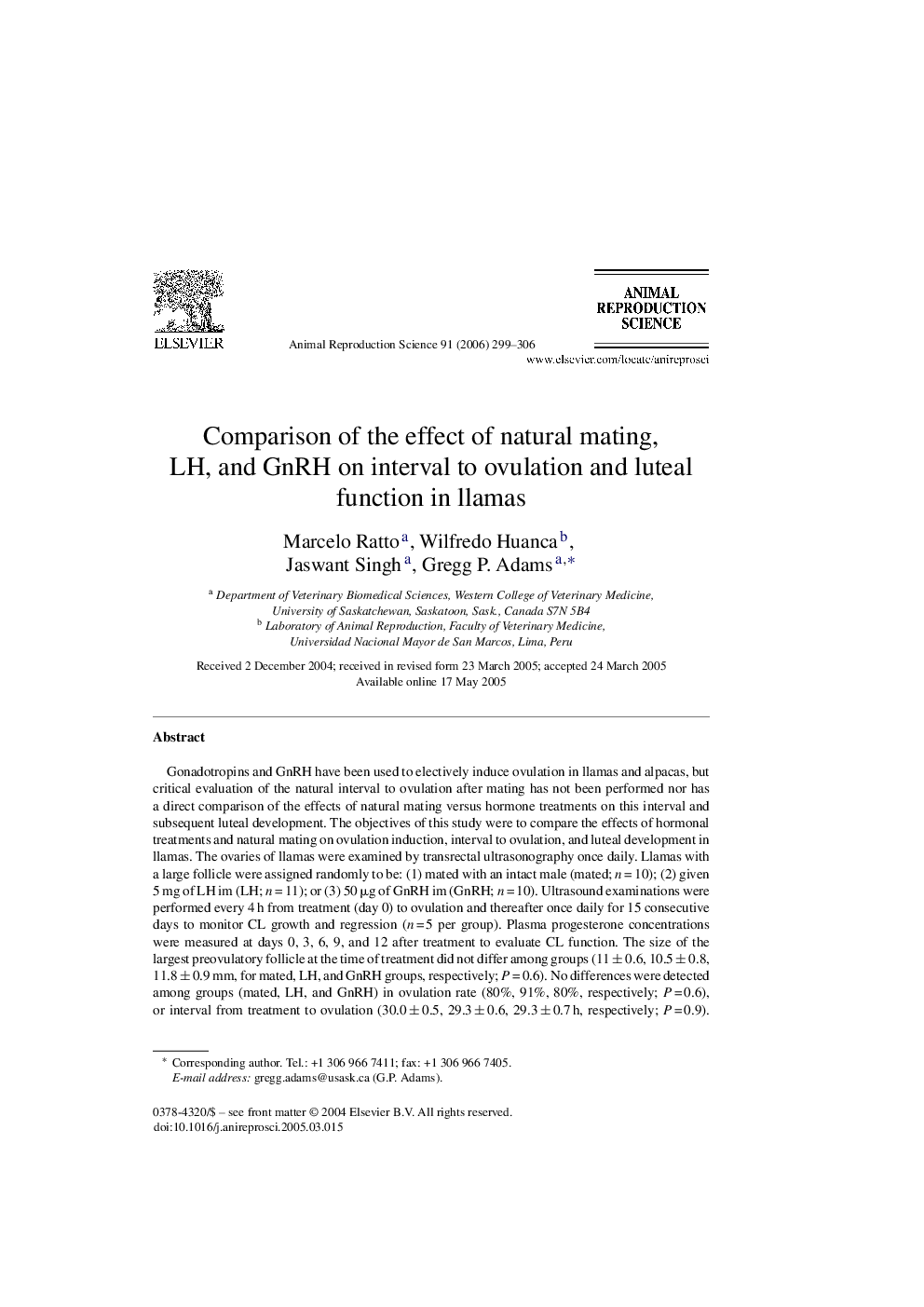| کد مقاله | کد نشریه | سال انتشار | مقاله انگلیسی | نسخه تمام متن |
|---|---|---|---|---|
| 2075059 | 1544832 | 2006 | 8 صفحه PDF | دانلود رایگان |

Gonadotropins and GnRH have been used to electively induce ovulation in llamas and alpacas, but critical evaluation of the natural interval to ovulation after mating has not been performed nor has a direct comparison of the effects of natural mating versus hormone treatments on this interval and subsequent luteal development. The objectives of this study were to compare the effects of hormonal treatments and natural mating on ovulation induction, interval to ovulation, and luteal development in llamas. The ovaries of llamas were examined by transrectal ultrasonography once daily. Llamas with a large follicle were assigned randomly to be: (1) mated with an intact male (mated; n = 10); (2) given 5 mg of LH im (LH; n = 11); or (3) 50 μg of GnRH im (GnRH; n = 10). Ultrasound examinations were performed every 4 h from treatment (day 0) to ovulation and thereafter once daily for 15 consecutive days to monitor CL growth and regression (n = 5 per group). Plasma progesterone concentrations were measured at days 0, 3, 6, 9, and 12 after treatment to evaluate CL function. The size of the largest preovulatory follicle at the time of treatment did not differ among groups (11 ± 0.6, 10.5 ± 0.8, 11.8 ± 0.9 mm, for mated, LH, and GnRH groups, respectively; P = 0.6). No differences were detected among groups (mated, LH, and GnRH) in ovulation rate (80%, 91%, 80%, respectively; P = 0.6), or interval from treatment to ovulation (30.0 ± 0.5, 29.3 ± 0.6, 29.3 ± 0.7 h, respectively; P = 0.9). Similarly, no differences were detected among groups (mated, LH, and GnRH) in maximum CL diameter (14.2 ± 0.3, 13.2 ± 0.5, and 13.0 ± 0.7 mm, respectively; P = 0.5), the day of maximum CL diameter (7.6 ± 0.2, 7.6 ± 0.2, and 7.4 ± 0.4 mm, respectively; P = 0.6), or the day on which the CL began to regress (12.3 ± 0.3 [non-pregnant, n = 3], 11.8 ± 0.6, 12.2 ± 0.4, respectively; P = 0.4). The diameter of the CL and plasma progesterone concentrations changed over days (P < 0.0001) but the profiles did not differ among groups. In summary, ovulation rate, interval to ovulation, and luteal development were similar among llamas that were mated naturally or treated with LH or GnRH. We conclude that both hormonal preparations are equally reliable for inducing ovulation and suitable for synchronization for artificial insemination or embryo transfer program.
Journal: Animal Reproduction Science - Volume 91, Issues 3–4, February 2006, Pages 299–306